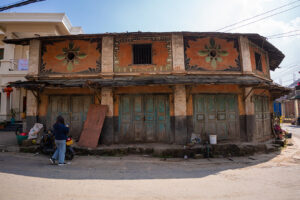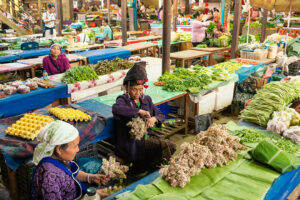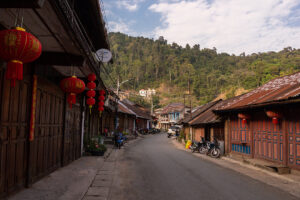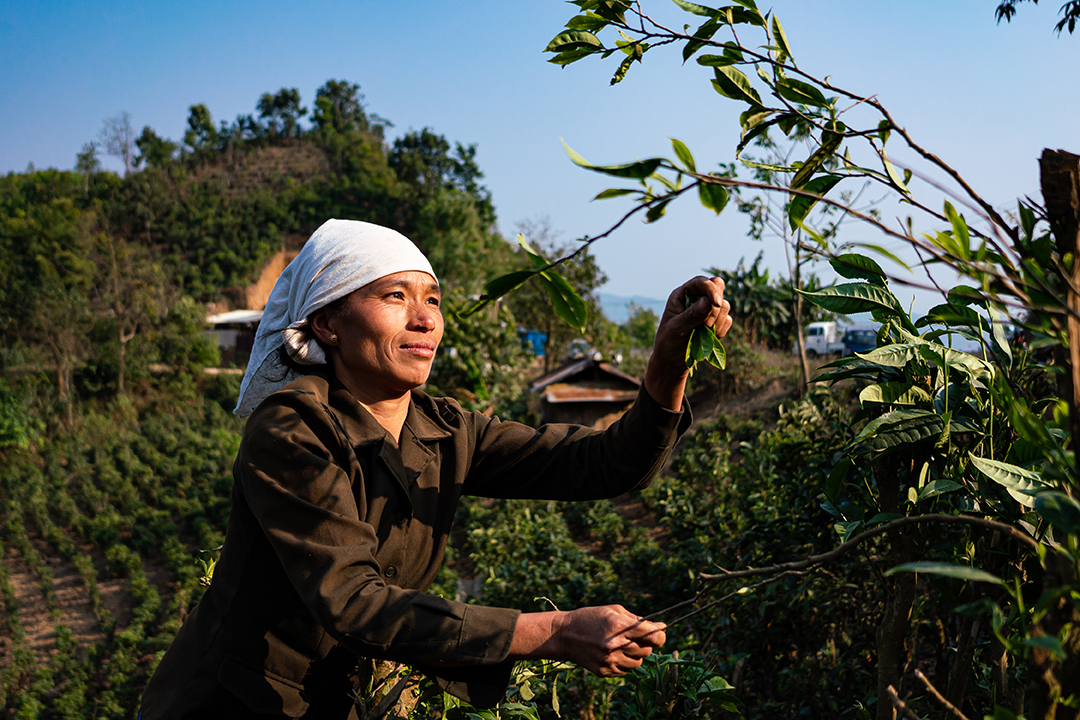Lao’s highest provincial capital is also highly unique
Right up in the far north of Laos, amid spectacular mountain scenery, you will find one of the most delightful little towns in all of Laos. It’s built on the side of Mount Phou Fa, some 1625 meters high, and the capital of the little-visited Phongsaly Province which pokes like a finger into China.
Phongsaly town is a rather special place, with its historic old town made up of charming stone-paved streets and traditional one and two-story houses, tumbling down the hillside. It’s a traditional Yunnanese settlement that is largely inhabited by the Phounoy and Haw minorities who fled there from famines and wars in China in the 19th century. Many of their prosperous houses display richly decorated facades, carved wooden doors, windows, and balconies, making a very attractive street scene. It is notable for being one of the last surviving traditional Yunnanese towns, as those in China were mostly destroyed during China’s Cultural Revolution.

Phongsaly has been by turns a Chinese, Vietnamese, and French outpost. A treaty brought it into French Laos in 1895 but it’s always been an edgy remote neighborhood, with revolts and insurrections taking cover among the mountains and forests. You can still visit the impressive French Fort which dominates the town.
It is probably the most rewarding part of Laos for trekking as it is certainly one of the least visited, most unspoiled, and ethnically diverse provinces. Every day you will see many of the colorfully dressed ethnic minority women in the streets and markets of the town. The neighboring forests, limestone mountains, and nearby Ou River valley are home to at least 22 ethnic groups, but some count up to 40, and there are said to be 14 types of Akha tribes.
It’s worth pointing out that the Museum of Phongsaly Ethnic Groups describes the ways of life, clothing, customs, and traditions of the many different ethnicities of the province and is a most rewarding visit.

Every square meter is precious and used, for little gardens or drying the green tea, for which the town is famous, packed in the traditional wicker containers, ready for transportation. You can rent a bike and pedal to Ban Komaen, about 15 kilometers away to see the extensive 400-year-old tea plantations. And there’s also a tea factory in the town where you can see how the tea is processed.
Towering over the town is the Phou Fa Stupa, which gives awesome views of the surrounding misty mountains after you have climbed the 800 steps to the top. There is also a road to the top and a welcome picnic spot halfway up.
Nearby places to explore are a few old Leu and Haw temples. Only about 5 kilometers from town on a rough road is Ban Khounsouk Noi where you can visit the distillery which makes the green rice alcohol which is the very drinkable specialty of the region.

What is more, it is only about 20 kilometers to the headwaters of the Ou River where you used to be able to take a boat all the way downstream to the Mekong, one of the wildest and spectacular river journeys in Southeast Asia. Nowadays a number of dams providing hydroelectricity would break up that voyage and make your trip more difficult.
On the other hand, as the road has been much improved, you can get there easily in a day from Oudomxay. And being high in the cool mountains, as climate change progresses, Phongsaly could easily become a summer resort, like the hill stations of Vietnam and India.
GETTING THERE
Phongsaly is only a few hours drive from Oudomxay. Lao Airlines has daily flighta to Oudomxay from Vientiane.
Text BY Gerry Paster
PHOTOGRAPHS BY Phoonsab Thevongsa



 ລາວ
ລາວ
